At the otter stream, sadly no otters though, 16 May 2023.
There was rain. I closed my petals and rested. In the dream, the cloud moved on, the starlight returned and as the air warmed, there was a new song, new scents, a new breeze. Everything is moving. Now the ants through the stems, the brief wing of birds, leaves shaping shadows, the unseen sap ever flowing in the boughs. The gleaning bees, the heartbeat of night and day. Everything is moving.
Peter Owen Jones, (from) The Windflower Speaks of Flux in Conversations with Nature
Hello dear readers and welcome to this New Moon in Taurus newsletter from Bracken & Wrack. With Taurus being an earth sign, the dance of other planets and stars at this time suggests a chance to rest deeply into our bodies and enjoy a time of quiet, loving strength both in ourselves and in our relationships with others as the moon waxes to full. While, of course, being alive to the unseen sap ever flowing in the boughs.
Two years ago: 19 May 2021
‘There’s a dragon on the porch roof’! 19 May 2021.
The Old Shop has a new resident and he already looks very much at home.
I didn’t go out looking for a dragon, you understand, but suddenly there he was, and after that he lost no time in jumping up to his lookout post.
I couldn’t ask for a better ward of this place. He even has his head turned towards the cottage yard, the better to keep a quiet eye on things while I’m busy elsewhere.
‘A sweet moodiness’: the foxglove
Foxgloves on the edge of the heath, 23 May 2020. When the wind calmed down I slipped out at twilight. In fact it was at the exact moment of sunset that I spotted this stand of foxgloves at the corner of the heath. Surely one of the most magical plants of the wild edges?
This is a fairy plant, and you will please the fairy folk if you grow the tall foxglove to nod in your garden. Fairies care for every flower and herb, but they find the foxglove especially hospitable. Some have seen the fairy dwellers within, and in their fear have given the flower strange folknames, for it is called Fairy Weed, Dead Men’s Bellows, Bloody Man’s Fingers and Witch’s Thimble. There is a poison in the plant which causes drunkenness and frenzy, so decline foxglove tea, for it is sinister. A few of the leaves and flowers of the foxglove, sparsely scattered, will bring a sweet moodiness to your bathtime which can do no harm.*
Claire Nahmad, Garden Spells: the magic of herbs, trees and flowers
* Be careful though! Try at your own risk.
No one seems sure how the foxglove acquired its name. I quite like the idea of gloves for foxes but prefer the explanation that ‘fox’ is a corruption of ‘folks’. So folks-gloves are the gloves of the Fair Folk, and seeing a group of them swaying in the half light who could argue with that?
Actually, foxglove is just one of the many names of digitalis purpurea. Some of its many folk names (yes, that word ‘folk’ again) are Fox-fingers, Lady’s Thimble, Witches Fingers, Witches Bells, Bluidy Man’s Fingers, Flowater-leaves, Fairy’s Glove, Fairy’s Cap, Fairy’s Thimbles, Witches Gloves, Bloody Fingers, Dead Man’s Bells, Cow-flop, Fairy Petticoats, Floppy-dock, Floptop, Fox Bells, Foxes Glofa, The Great Herb, Lion’s Mouth, Lusmore, Lus Na Mbau Side, and Our Lady’s Gloves.
Quite a varied collection aren’t they? From the sweetly enchanting, like fairy’s cap, to the downright strange. Cow-flop we’re looking at you. And I’d love to know more about some of those that don’t seem to fit neatly into a clear theme, like The Great Herb which is most intriguing.
In Herb Craft, Susan Lavender and Anna Franklin mention an alternative derivation of the name foxglove, suggesting that it could be a corruption of the Anglo-Saxon Foxes-gleow. A gleow was an arched musical instrument hung with graduated bells. The foxglove has a tendency to arch, allowing the bells of the flowers to hang and resemble the instrument. Part of me hopes this is right as the image of a fox sitting playing a gleow is a very pleasing one, isn’t it? :)
In the same book we’re also told that in Wales, housewives once made a black dye from the foxglove which they used to paint crossed lines on the stone floors of their cottages to prevent evil entering.
As I’m sure most people know, foxglove has provided the main drug for the treatment of heart failure for more than two hundred years. Much of the initial research done on the medicinal properties of the foxglove was the work of a Dr Withering (d. 1799) who wrote a thesis on the use of digitalin, entitled An Account of the Foxglove. In a portrait now in the National Museum in Stockholm, Dr Wittering holds a foxglove, and the flower also adorns a memorial to him in Edgbaston Old Church in Birmingham.
Nicholas Culpeper (1616-1654) ascribes some interesting virtues to foxglove which he, charmingly, calls fox-glove. He gives the plant as being under the dominion of Venus as it is ‘of a gentle cleansing quality and withal very friendly to nature’. This is a huge contrast to its common portrayal as a deadly poison, not to be trifled with. Among other benefits, after explaining that the herb is ‘familiarly and frequently used by the Italians to heal any fresh or green wound, the leaves being but bruised and bound thereon’, Culpeper recommends its use internally as a decoction mixed with sugar or honey to purge the body ‘both upwards and downwards’. I don’t think so!!!
But back to our foxgloves nestled in their hollow at the very edge of the heath. As Culpeper says, they grow ‘on dry sandy soil for the most part, and as well in the higher as the lower places under hedge-sides’. True edge-dwellers, and as we know, edges tend to be ‘thin’ places, betwixt and between and so the perfect location for the worlds to merge and swirl a little.
White with greenish hue, palest pink with freckles, glowing magenta or the deep purple spires thrusting up from Cornish moorland and cliff top. If you were a fairy what colour would you choose for your gloves?
Checking your seaweed
It was usually a strip like this that I remember seeing in people’s porches when I was little.
When I was a small child I would often see a long strand of seaweed hung by a back door or in a porch when visiting other people’s homes. This was not, as you might think, in a seaside village but in suburban Norwich. It seems there was a common belief that you could forecast the weather by checking your seaweed, and I took it for granted that this was true. If the strip became damp and pliable, rain was sure to be on its way. I’d imagine that the ‘science’ of this is to do with humidity levels, but I had every faith that it was magic.
A more protective use for seaweed comes from Gemma Gary who, in her book Traditional Witchcraft tells us of the intriguingly named Lady’s Tree charm - a bunch of bladderwrack bound with red thread and hung inside the chimney to protect the household from fire.
Two years ago when I collected seaweed from my nearest beach for the gift wrapping of my Sea Charm candles I noticed how silky soft it left my hands. I keep meaning to look into making natural skincare using this beautiful local gift from the sea. I pegged it out to dry, hoping - as it was a wet May that year - that it wasn’t going to forecast yet more rain.
I’d gathered more than I needed (from above the tideline of course) so the surplus got sprinkled onto my compost heap. It’s a fantastic activator and very high in nutrients.
Please do share if you know of any interesting ways of using seaweed. I’m not sure that I’d be keen on eating it from the seas here, sadly, but I’m okay with the thought of putting it onto my skin. Selkie magic! Now there’s a thought.
Collected.
Pegged out to dry, 25 May 2021.
Suddenly above the fields you’re pouring
Pure joy in a shower of bubbles,
Lacing the spring with the blue thread of summer,
You’re the warmth of the sun in a song.
You’re light spun to a fine filament:
Sun on a spider-thread -
That delicate.
You’re the lift and balance the soul feels,
The terrible, tremulous, uncertain thrill of it -
You’re all the music the heart needs,
Full of its sudden fall, silent fields.
Katrina Porteous, Skylark
The edge of the field, 12 May 2023.
Bishy barnabee
Here in Norfolk, a ladybird is a bishy barnabee. When I googled to check the spelling I discovered that we have a road called Bishy Barnabee Way, a Bishy Barnabees Day Nursery and even a seed supplier called Bishy Barnabee’s Cottage Garden. Who knew?
In my own family as I’m sure many others, I was brought up believing that if a ladybird landed on you you should make a wish and then gently encourage it to fly away, saying or singing:
Ladybird, ladybird fly away home
Your house is on fire and your children have gone
All except one, and that’s little Ann
And she has crept under the frying pan.
What is it about ladybirds and marriage divination? A traditional rhyme (which I remember children in the playground actually saying) goes:
Bishy bishy barnabee
Tell me when my wedding be;
If it be tomorrow day
Take your wings and fly away.
This echoes the old saying that if a ladybird alights on your clothing, you will soon wear your wedding dress.
Here are a couple more. If a ladybird settles on your skin or hair, good fortune will come to you and you will have as many good months as there are spots. And, a ladybird with seven spots on its back is a fairy’s pet. You may make three wishes before it flies away.
It’s only when I started thinking about ladybirds that I realised how the image of these tiny creatures, said to be symbols of fire and the sun, pervaded my childhood. At school we learned to read with Peter and Jane in the Ladybird Books series, and on our bookshelves at home there were many others bearing the Ladybird logo: simple retellings of fairytales, books on science, history, nature, ‘how the world works’ and, my favourite, Things To Make (I was always reading or making things, so what more perfect combination?).
Most of my brother’s and my wardrobe - well apart from the dresses my mum made for me - was comprised of Ladybird children’s clothing, which I remember being advertised in the monthly Family Circle magazine my mum always picked up at the Sainsbury’s checkout. Buying these clothes (mostly, it seemed, dull underwear) entailed an occasional outing to the big department store in The City (as Norwich was, and is, always referred to). There the highlights were the measuring gauge on the wall of the children’s department crowned with its ladybird and, especially, the real rocking horse that stood in the middle and which I was always desperate to ride whenever it creaked gently without a rider on its back.
To top it off, we were always allowed to choose a drink in the restaurant which would invariably be an ice cream soda - a scoop of ice cream in a fizzy drink of choice, the reaction between the two creating an excitingly wild frothing action. I remember this treat costing 9p, but that must have been after decimalisation when grown-ups moaned about all the prices suddenly going up.
But let’s get back to ladybirds, of which there are, amazingly 40 different species considered resident in the UK. Many of these are the ones with the familiar red or yellow elytra (wing cases) and light or dark spots. But around 20 are less than 3mm long and dark in colour, so very often they are not recognised as ladybirds. Which leads me to wonder, metaphorically, how many of us are going around in disguise when really we are a fairy’s pet?!
I’ll leave you with a quick quiz question: which is the most common species of ladybird in Britain? Answer at the bottom of this newsletter :)
The Observers Book of Insects didn’t fail me!
From love to light my element
was altered when I fled
out of your house to meet the space
that blows about my head.
The sun was rude and sensible
the river ran for hours
and whoops I found a mustard field
exploding into flowers;
and I slowly came to sense again
the thousand forms that move
all summer through a living world
that grows without your love.
Alice Oswald, Woman in a Mustard Field
Bright yellow fields have always been a feature of the May landscape where I live. For well over a century mustard held sway, and J Colman’s mustard factory in Norwich is known a very long way beyond its county, or even its country. More recently the golden fields are more likely to be of rapeseed, grown for its oil. Several friends have gone over exclusively to using this oil for all kinds of culinary, herb medicine and magical applications, especially with the appeal - on so many levels - of making a pilgrimage to one of the main producers, Yare Valley Oils to buy in bulk taking your own container.
Even if you can’t do this, there is definitely a May-tide feeling to this array of gold, linked, like the ladybird, to fire and the sun. So, I thought I would give a recipe for a dressing that you might like to use on your seasonal salads or drizzled over vegetables to imbue them with some of the summery warmth taken in by those cruciferous dazzling-yellow petals.
Imagine the brilliance that skylarks witness as they soar and hang in the air overhead, trilling their own magic into the fields! We must make sure that skylarks are always with us.
The Skylark’s Vinaigrette
1.5 tbsp wholegrain mustard
1 tbsp honey (or use maple syrup)
1.5 tbsp white wine vinegar
3 tbsp extra virgin olive oil
3 tbsp rapeseed oil (or use sunflower)
Place all the ingredients except the oils into a medium bowl and whisk. Gradually add the oils in a fine stream, whisking all the while to make a smooth, emulsified dressing.
It goes well over grated carrots with a few chopped herbs and a sprinkle of seeds.
Old May Day - a deeper tide
I talk a lot, I know, about the deeper currents running through the year. Deeper, at least, for those who follow the feast days, folklore and wild saints whose stories have always been strongly tied to the seasons and the land. Here’s a video that I made last year for Old May Day which also goes into it a little. The aquilegias in my wild garden really were stunning. And, as the wheel turns full circle, it is lovely to be able to report that this year they are perhaps even more glorious in their tousled barefoot beauty, laying a trail wherever they will.
Oh, and the answer to the most numerous species of ladybird in the UK is ….. the seven spot ladybird! Bearing in mind what I reported earlier about seven spot ladybirds, make of that what you will ;)
Until next time,
With love, Imogen x
Poems and Prose
Alice Oswald, Woman in a Mustard Field, The Thing in the Gap-Stone Stile, Oxford University Press 1996.
Peter Owen Jones, Conversations with Nature, Clairview Books, 2022.
Katrina Porteous, Skylark, from The Lost Music, Bloodaxe Books 1996.
Susan Lavender & Anna Franklin, Herb Craft, Capall Bann Publishing 1996.
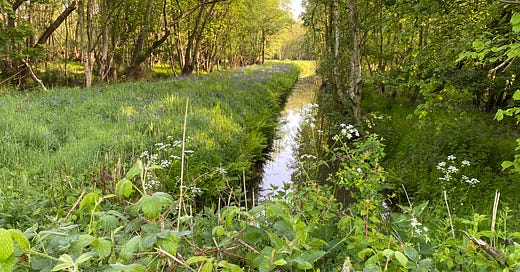



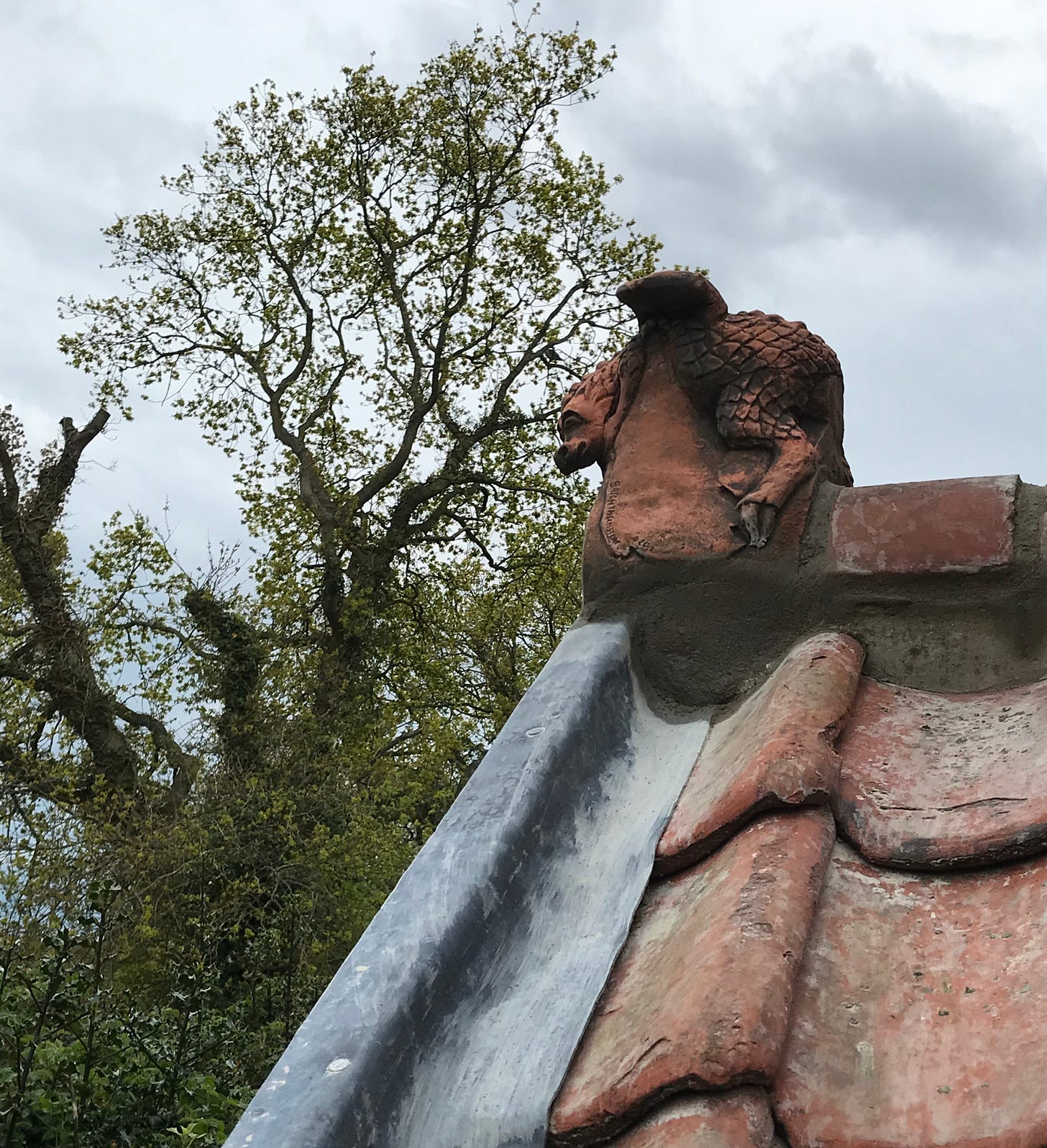
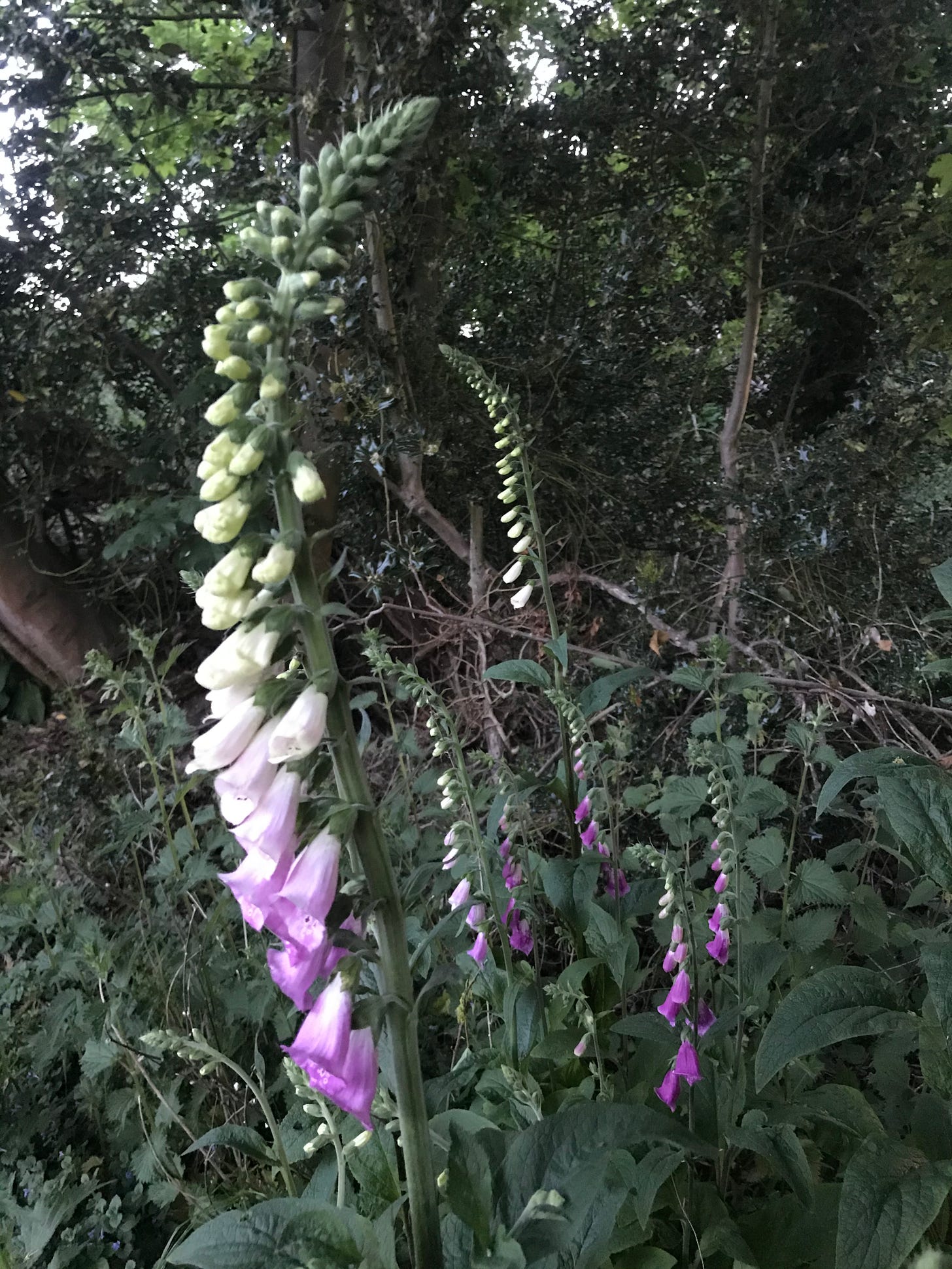
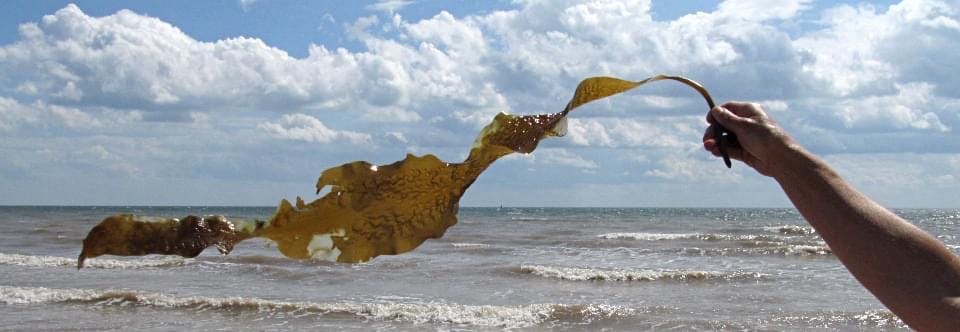
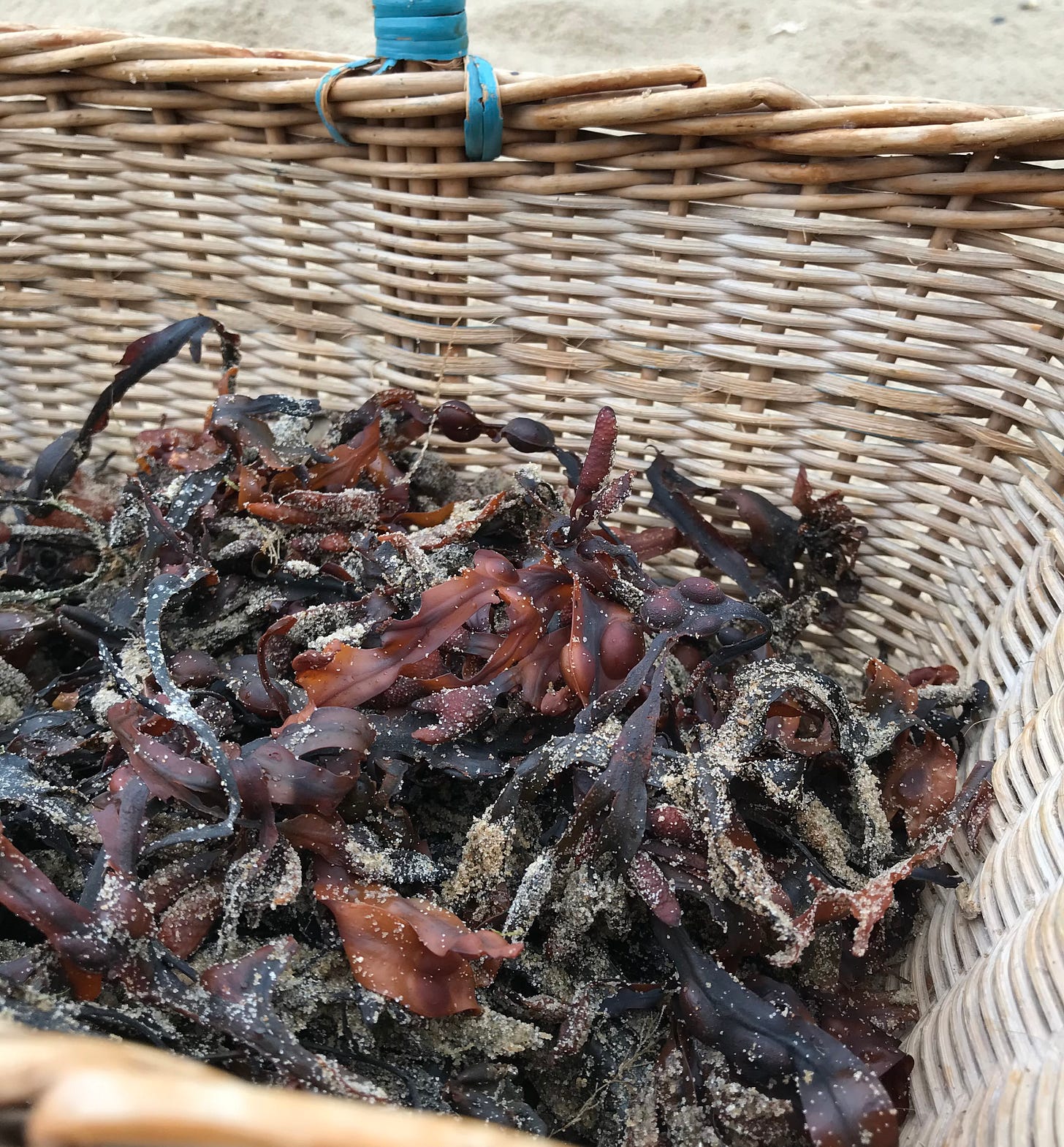
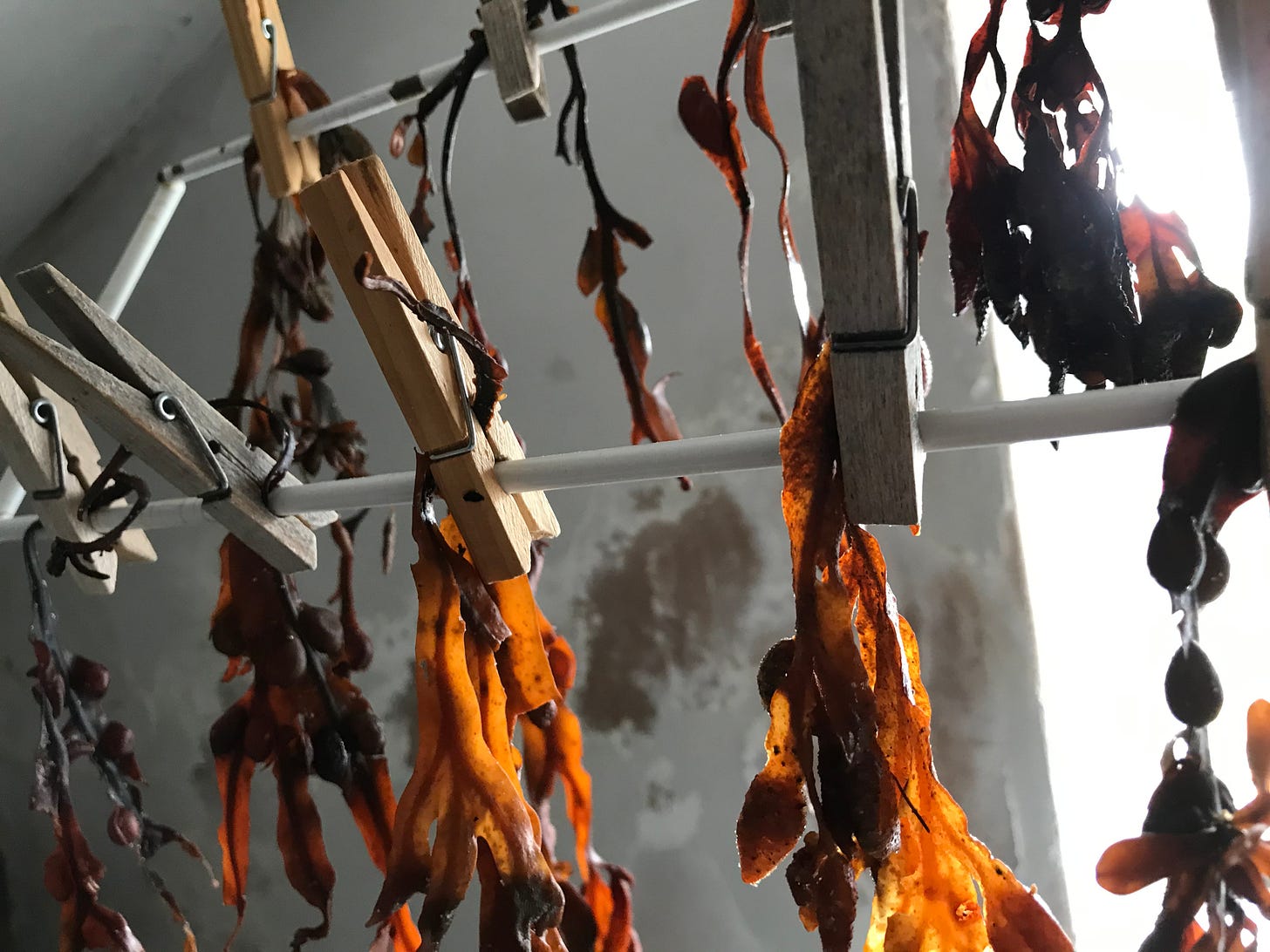
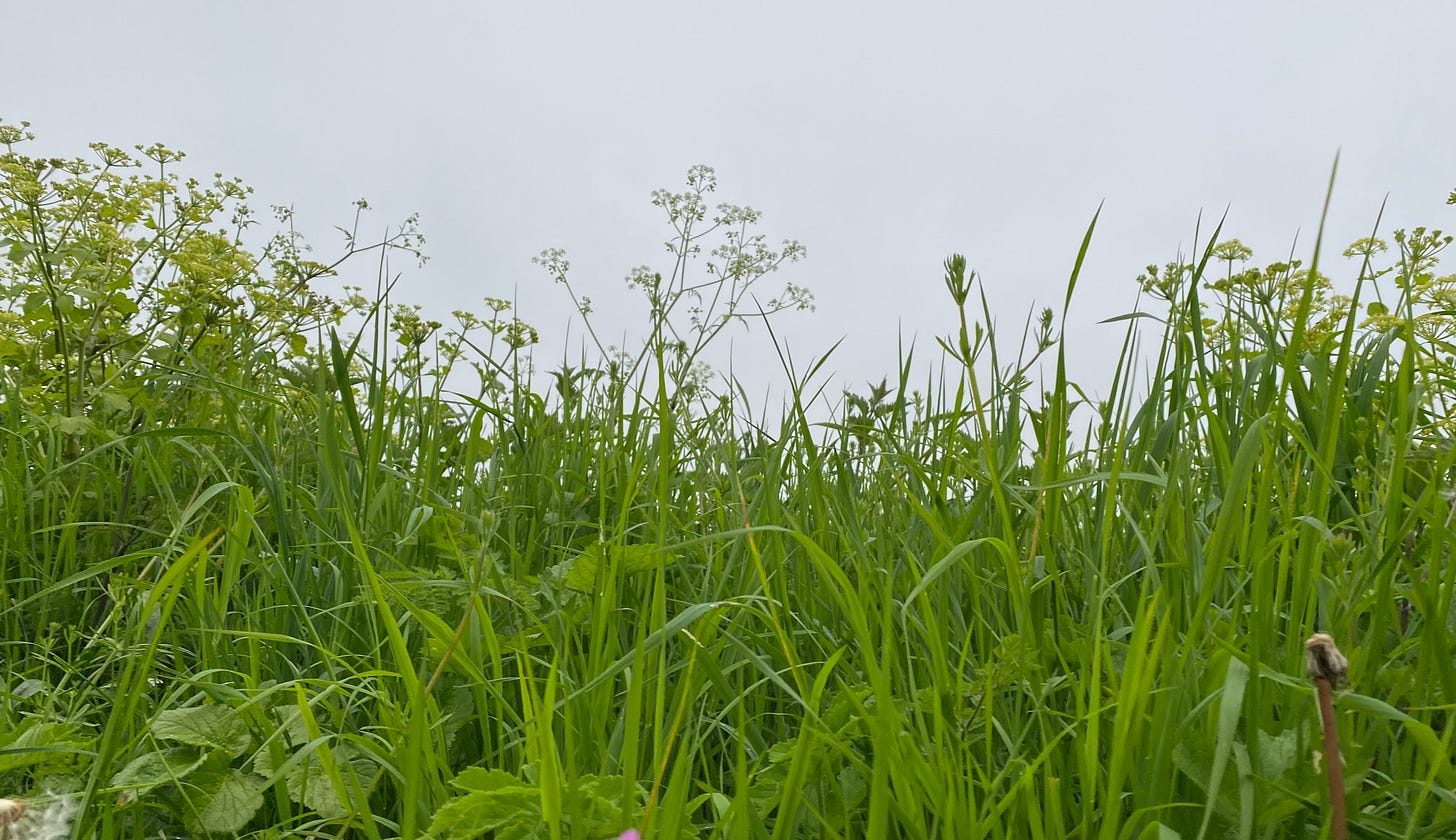
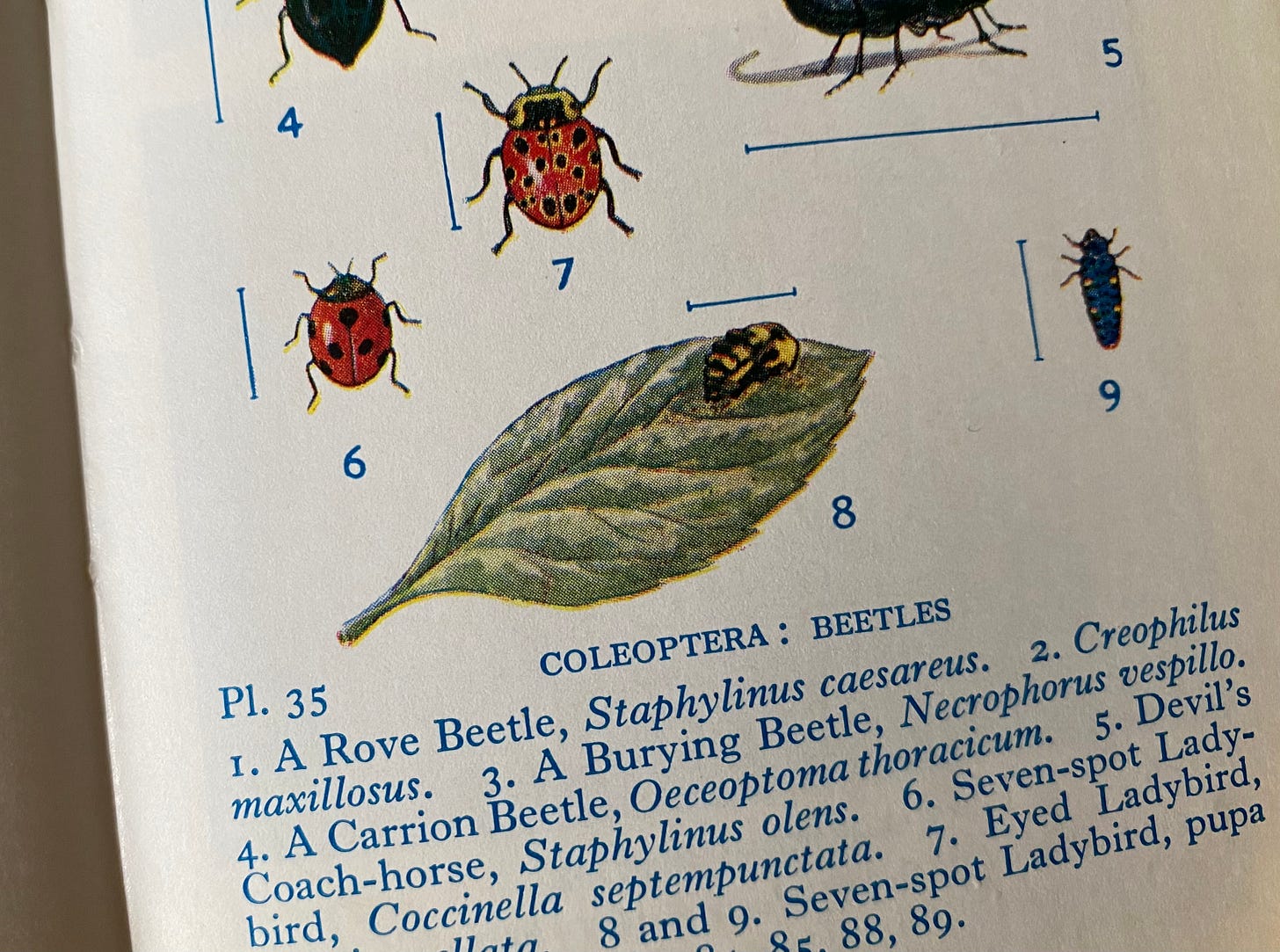
What a joy to read your word magic this morning, especially bishy barnabees! I remember the ladybird clothes for children too, I remember still seeing them in the 1980s when my first son was born but not really after that time. I wonder what happened to them?
Really great to hear the old shop has a dragon on the roof, that feels very fitting! Thank you for your joyful writing Imogen, it’s really appreciated by me.
Every home should have a dragon to guard it! Also, thank you for the information on foxglove - what a magical wildflower it is!